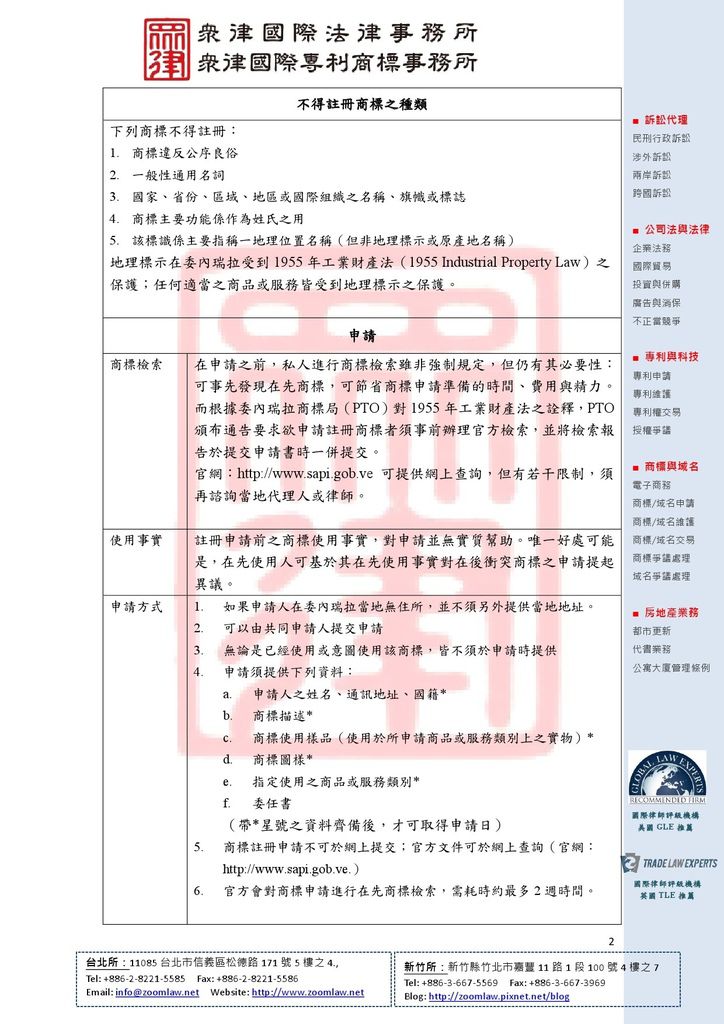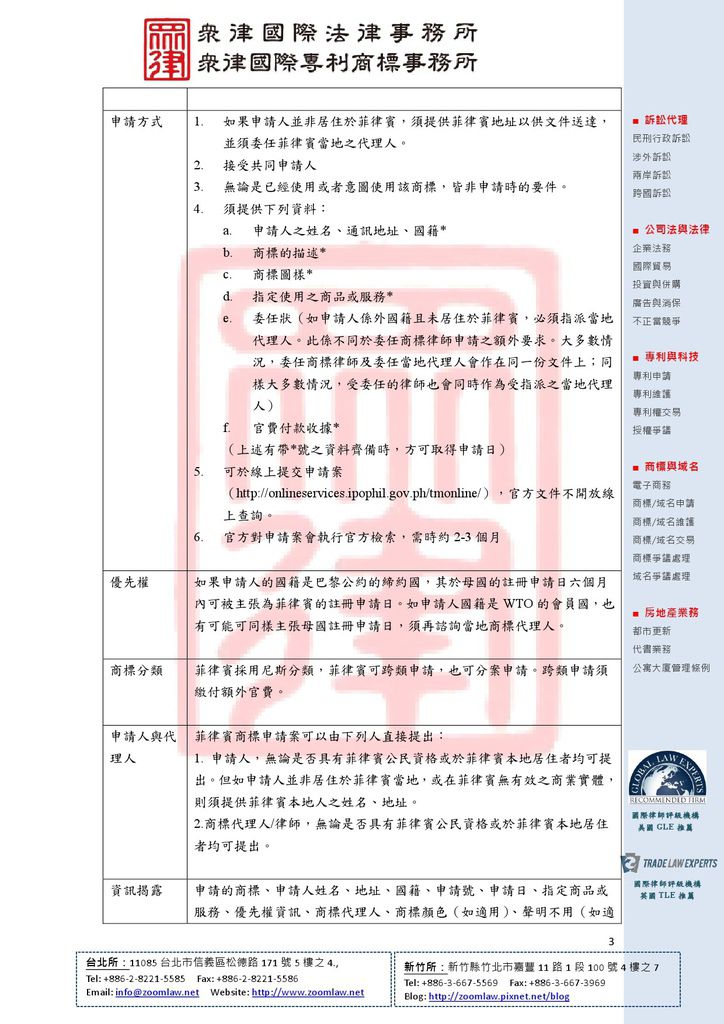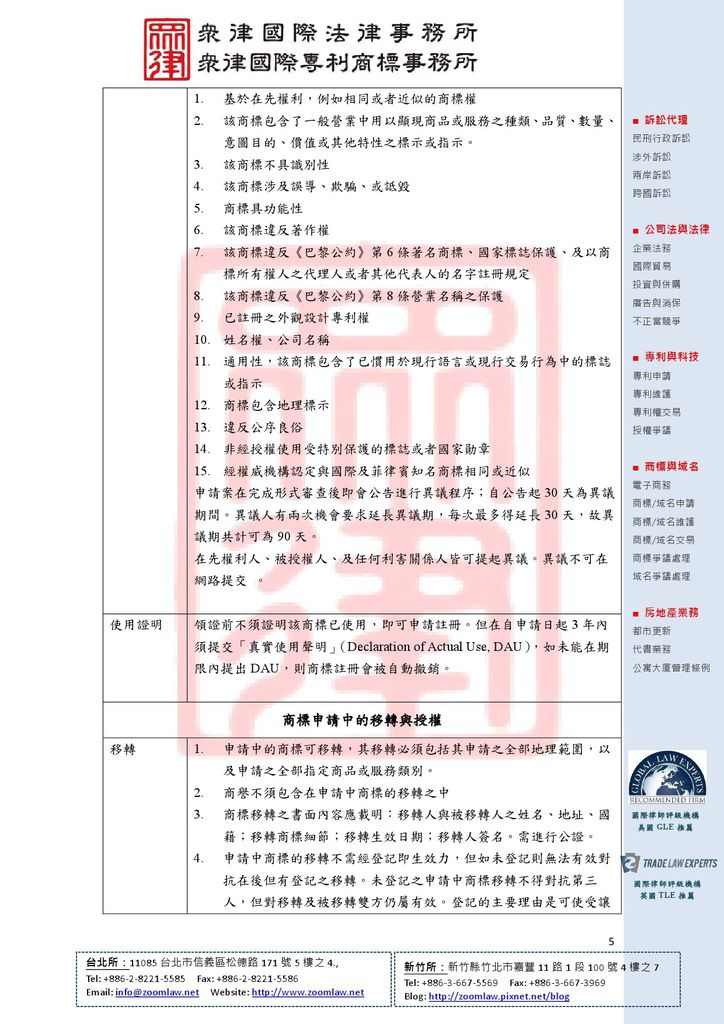Taiwan Trademark 101 Series, the Protection of Well-known Trademarks.
Written by: James Y. Chang
Attorney-at-Law
1. Preamble
If a trademark didn’t file for registration in Taiwan, it still can be protected by the well-known trademark right from both national laws and international conventions.
2. Regulations
Taiwan is a member of WTO. According to the Article 2 of WTO TRIPS agreement, members shall comply with Articles 6[1] of the Paris Convention (1967) which rules that no application shall be filed for registration of a trademark that is identical or similar to another person’s well-known trademark or mark that it is likely to cause public confusion.
Even though Taiwan is not a membership of WIPO, she follows the well-known mark agreement[2]of WIPO to protect them from either the use of that mark is likely to impair or dilute in an unfair manner the distinctive character of the well-known mark or the use of that mark would take unfair advantage of the distinctive character of the well-known mark[3]. The Trademark Act[4] of Taiwan recognizes two types of well-known trademark dilution, namely likelihood of dilution of the distinctiveness of well-known trademarks and likelihood of dilution of the reputation of well-known trademarks, which protection is as well as the rules of WIPO.
3. Factors to Be Considered When Determining Well-known Trademarks
The determination of well-known trademarks should be made on a case-by-case basis and by taking into consideration. According to the Examination Guidelines for the Protection of Well-known Trademarks[5], the following factors shall be considered as a whole:
(1) The strength of the distinctiveness of the trademark.
(2) The extent to which the relevant enterprises or consumers know or recognize the trademark.
(3) The duration, scope, and geographical area of use of the trademark.
(4) The duration, scope, and geographical area of promotion of the trademark.
(5) Whether the trademark has applied for registration or the trademark has been registered, and its term, scope, and geographic area that are registered or being registered.
(6) Any record of successful enforcement of trademark rights, especially the fact that the trademark has been recognized as a well-known one by an administrative or judicial authority.
(7) The value of the trademark.
(8) Other factors that could be considered in determining whether a trademark is well-known.
The above factors for judging whether a trademark is well-known are only examples. They may not be all necessarily taken into consideration in one case; only those that are relevant enough to determine whether the trademark is well-known should be considered, depending on the circumstances of the case.
[1] Article 6bis: [Marks: Well–Known Marks]
(1) The countries of the Union undertake, ex officio if their legislation so permits, or at the request of an interested party, to refuse or to cancel the registration, and to prohibit the use, of a trademark which constitutes a reproduction, an imitation, or a translation, liable to create confusion, of a mark considered by the competent authority of the country of registration or use to be well known in that country as being already the mark of a person entitled to the benefits of this Convention and used for identical or similar goods. These provisions shall also apply when the essential part of the mark constitutes a reproduction of any such well–known mark or an imitation liable to create confusion therewith.
(2) A period of at least five years from the date of registration shall be allowed for requesting the cancellation of such a mark. The countries of the Union may provide for a period within which the prohibition of use must be requested.
(3) No time limit shall be fixed for requesting the cancellation or the prohibition of the use of marks registered or used in bad faith.
[2] Joint Recommendation Concerning Provisions on the Protection of Well-Known Marks at the Thirty-Fourth Series of Meetings of the Assemblies of the Member States of WIPO September 20 to 29, 1999
[3] Ibid. Article 4 (1)
(b) Irrespective of the goods and/or services for which a mark is used, is the subject of an application for registration, or is registered, that mark shall be deemed to be in conflict with a well-known mark where the mark, or an essential part thereof, constitutes a reproduction, an imitation, a translation, or a transliteration of the well-known mark, and where at least one of the following conditions is fulfilled:
(i) the use of that mark would indicate a connection between the goods and/or services for which the mark is used, is the subject of an application for registration, or is registered, and the owner of the well-known mark, and would be likely to damage his interests;
(ii) the use of that mark is likely to impair or dilute in an unfair manner the distinctive character of the well-known mark;
(iii) the use of that mark would take unfair advantage of the distinctive character of the well-known mark.
[4] Trademark Act Article 30: grounds for refusal of registration
(11) being identical with or similar to another person’s well-known trademark or mark, and hence there exists a likelihood of confusion on the relevant public or a likelihood of dilution of the distinctiveness or reputation of the said well-known trademark or mark, unless the proprietor of the said well-known trademark or mark consents to the application;
[5] Examination Guidelines for the Protection of Well-known Trademarks under Subparagraph 11 of Paragraph 1 of Article 30 of the Trademark Act. Enacted and promulgated on November 9, 2007 by the order of the MOEA. Amended and promulgated on April 20, 2012 by the order of the MOEA, enforced on July 1, 2012.






























